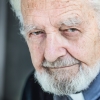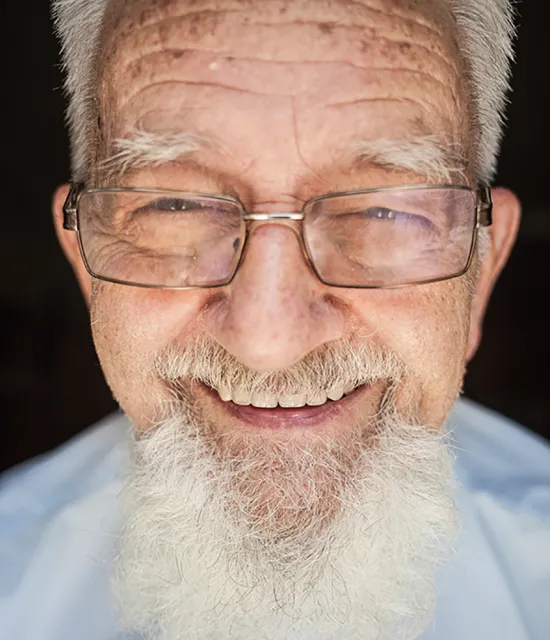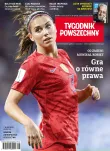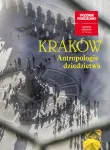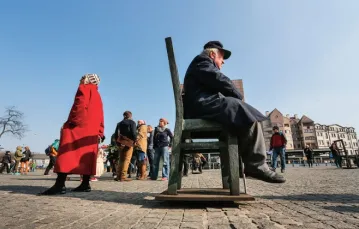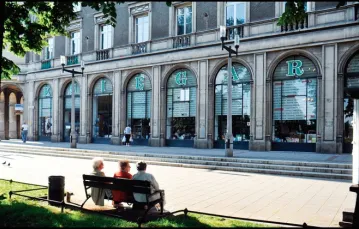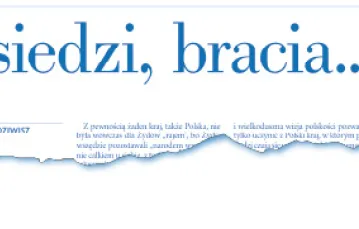Wykupienie dostępu pozwoli Ci czytać artykuły wysokiej jakości i wspierać niezależne dziennikarstwo w wymagających dla wydawców czasach. Rośnij z nami! Pełna oferta →
In the labyrinth of Kraków streets / I was led by Arthur and Ronard / It wasn’t easy, ’cause there was so much bliss / And the night was mad and high-flown / As we were wandering through the whole of Krakow by night: / Nightly BIRDS STUFFED / nightly TYPING CLASSES / nightly SUNDAY MASSES / nightly MACBETH TODAY / nightly FRENCH UNDERWEAR / nightly STREET CAR / nightly COFFIN / … / nightly mark: BY THE CHURCH! / And the countless night-veiled signs / My devoted nightly friends / Eternal wind, eternal night”. [translated the from Polish by Mikołaj Gałczyński]
Whenever I hear about a “subjective map of Kraków”, I immediately recall this passage from Konstanty Ildefons Gałczyński’s The Enchanted Carriage. Anyone who knows the city is aware that the “labyrinth of Kraków streets” looks slightly different than that described by Gałczyński. Still, the map is supposed to be subjective.
I was born in Warsaw, but I have lived an important part of my life (since 1965) in Kraków; to be precise, 20 years in France and Rome must be subtracted from this, so in total 34 years in Kraków. My map of the city has been woven from memories and meetings, and also from relishing its continuity. In “my” Church of St Florian, which once stood on the outskirts of the city, and today is in its centre, yet has still remained the same, the bodies of dead kings would be kept while their tombs were being made on Wawel Hill. I do not know whether the corpses were stored in the large sacristy or perhaps lay in state in the church proper. From St Florian in the Kleparz district, they were then moved to Wawel Castle.
Kleparz. This is where the condemned were executed. Here, near where Długa Street and św. Filipa Street meet, there once stood a leper house. Today, a little further away, stands the Ludwik and Anna Helcel House for the Poor. In its dormitories, I heard stories told by fathers and mothers placed there by their children who now had neither the time nor the desire to visit them. The history of Kleparz is recounted by Father Jan Kracik in his 1993 book Ludzie z przedmieścia historii. Kleparzanie czasów staropolskich (People from the suburbs of history. Ancient residents of Kleparz). Father Kracik lived near the Church of St Florian, and from there he made regular bicycle trips to in Bielany. And it was in Bielany that he wanted to be buried, but in the regular cemetery, and not in the Camaldolese monastery.
Bielany... I conducted several retreats in the hermit monastery, which was established in the early 17th century. Precisely because it is anachronistic, this hermitage is well suited to our times. Many of us long for silence, nightly prayers, solitude, ascetic meals, and being far removed from the hustle and bustle of the city whose lights shimmer in the distance. The Bielany monastery prays for that city. One of its former residents was Father Piotr Rostworowski, a Camaldolese hermit and sage, who moved there from the Benedictine monastery at Tyniec. He had eyes that were always smiling.
Now I am going back to the city centre. The Church of St Mary, with its altar by Veit Stoss, which I had the opportunity to see at close quarters, absorbing every detail, when it was returned to Kraków after the war, restored, and put on display in Wawel Castle.
The Church of St Anne, with Bishop Jan Pietraszko, who is now buried under its floor. His masses and sermons drew people from the furthest corners of Kraków. A holy man whom I had the honour of meeting every day. I visit him there sometimes, but I do not ask for advice because he was always reluctant to give it. I rather ask him to pray for me in the place where he is. Another sacred point on my map is Franciszkańska Street. Archbishop Karol Wojtyła’s house was open to everyone, and to Tygodnik Powszechny in particular. Every month he would invite us to important debates, or rather to friendly conversations. The third sacred point is “the Coffin”, as the house in aleja Słowackiego where professors of the Jagiellonian University once lived is affectionately called. Hanna Chrzanowska (later the Blessed Hanna Chrzanowska) used to live there. It was in “the Coffin”, over a glass of white wine, that we discussed the involvement of the university chaplaincy in her work of providing home care for the chronically ill.
When passing the corner of Lenartowicza and Siemiradzkiego streets, I never fail to think of Anna and Jerzy Turowicz, who lived on the third floor. They took me under their roof, and from there I would walk to the Church of St Anne and to our office in Wiślna Street. The Turowiczes’ appartment still lives within me, although it has long since gone.
The very centre of my map of Kraków, however, is No. 12 Wiślna Street – the editorial office of Tygodnik Powszechny. In communist times, everyone visited that office, including Poland’s foreign friends. Walking through the vestibule and climbing the gentle wooden stairs, I can still see in my mind’s eye Jerzy Turowicz hurrying to get to the office.
As I write this, the subjective map of Kraków inside my head is getting ever thicker. Places trigger memories of events and people. I could add here the Dominican Church with its university chaplaincy, which did not exist at first and then suddenly exploded with the energy of Father Tomasz Pawłowski. Other important memories are related to places where the communist security service interrogated us, for example on Szczepański Square…
All this has played out on the map of old Kraków, which always looks like a sophisticated stage set, whether under moonlight, at dawn, in the snow or amongst the greenery of spring. Perhaps other people think the same about their cities. For me, Kraków is a city that you can become accustomed to, that you can fall in love with. Its map comprises a huge chunk of history; importantly for me, it also comprises a huge chunk of my life. And that is why this private map is so hopelessly subjective. ©℗
KRAKÓW. ANTROPOLOGIE DZIEDZICTWA – CZYTAJ CAŁY DODATEK SPECJALNY >>>
KRAKOW. ANTHROPOLOGIES OF HERITAGE – READ MORE IN ENGLISH >>>
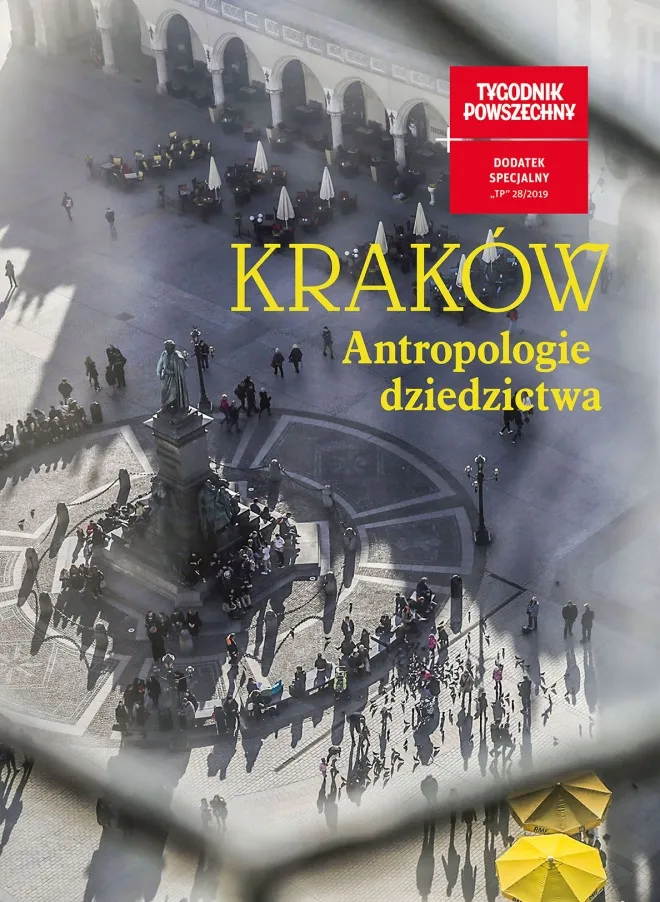
Supplement to Tygodnik Powszechny 28/2019
EDITORS: Anna Niedźwiedź, Marcin Żyła
PHOTO EDITING: Grażyna Makara
TYPESETTING: Anna Prusiewicz / DoLasu
PROOFREADING: Sylwia Frołow, Grzegorz Bogdał, Maciej Szklarczyk
TRANSLATION: Jasper Tilbury
COVER: view of the Market Square from the tower of St Mary’s Church | PHOTO: Beata Zawrzel / Reporter
Kraków 2019, ISBN 978-83-65811-05-9
This publication came about thanks to cooperation with the Polish team of the international HERILIGION consortium within the framework of HERA’s Uses of the Past programme. The project is financed by the HERA network, NCN, AHRC, FCT, DASTI, NOW, and the European Union under the Horizon 2020 research and innovation programme on the basis of grant agreement no. 649307. The Polish part of the project is carried out at the Institute of Ethnology and Cultural Anthropology at the Jagiellonian University’s Faculty of History. The Tygodnik Powszechny Foundation is a partner of the project. www.heranet.info

